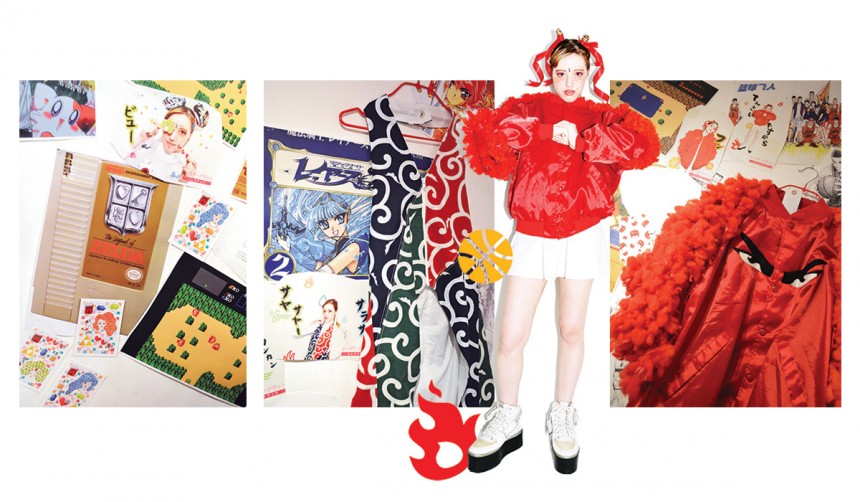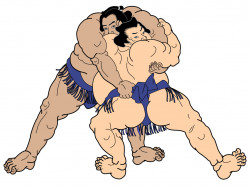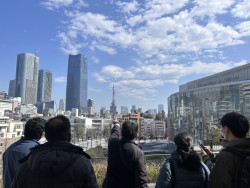
As a proof of concept for Josiah Chua’s theory of “superflat,” the designer curated the Hyperflat Collective (http://meturl.com/hyperflat), a showroom where similarly-minded creatives could interpret Japanese pop culture aesthetics within their fashion output. The showroom brought together designers and artists from around the globe who currently base their activities in Tokyo, as well as tapping into perspectives from local designers.
Held in Harajuku’s Design Festa Gallery, the collective exhibition highlighted the wealth of possibilities by exploring the aesthetics of Japanese pop culture in fashion. Indonesian designer Gisela Juwono channeled the process of layering that goes into making anime cells into a surprisingly wearable UFO Baby-themed capsule collection, while Stacy Tan from Singapore focused the entirety of her output on Slam Dunk character Sakuragi Hanamichi’s signature red hair. Other participants, such as Christina Bucci, took a more philosophical route. The Canadian used her Sailor Moon-themed output to replicate the sense of volume that is generated in the fundamentally flat images of anime and manga in fabric, making clutch bags in the shape of the soldiers’ haircuts, from two flat layers of fabric that together build to a 3-D whole.
Where the movement is heading was perhaps best predicted by Rakui Le from China, with her resin jewelry that combines figures from different manga and anime to create entirely new characters, distilling in the process the aesthetics of the originals to their component parts. These parts, in effect, become the language of the aesthetic, in the same way as safety pins and studs became the instantly understandable visual language of punk.
What is perhaps most remarkable about the collective is that it raises the simple question of why no one’s attempted it so far. While in recent years there have been more and more collaborations between fashion and pop culture, a true genre that self-declares itself as such had yet to materialize—until now. Perhaps the taboo of ’80s otaku culture still hangs heavily in the air, or Japanese fans want to preserve their self-imposed social distance? At any rate, with international fans approaching the subject evidently free of stigma, maybe they’ll inspire more domestic designers to embrace their own culture’s aesthetics in fashion.







